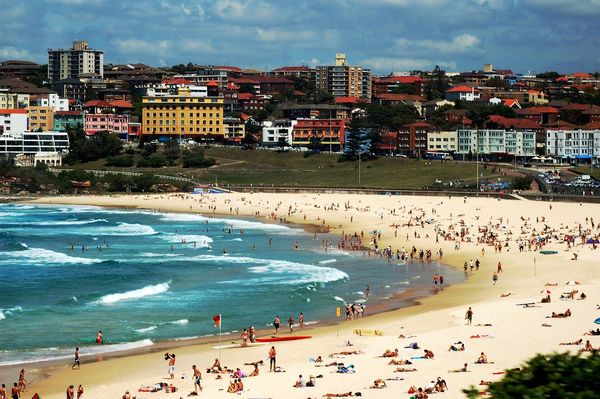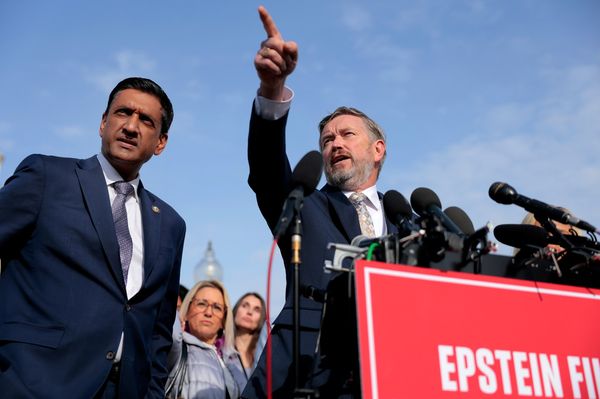
The Australian government will substantially expand a renewable energy underwriting scheme as it aims to capitalise on the falling cost of solar panels and batteries and combat concerns it may struggle to meet its 2030 climate target.
The climate change and energy minister, Chris Bowen, said the government would increase the size of its main climate and energy program – known as the capacity investment scheme – by 25%.
It means Labor plans to underwrite the construction of 40 gigawatts of large-scale solar, wind and storage by the end of the decade. In capacity terms, this is nearly twice as much energy infrastructure as the country’s existing coal-fired power fleet.
The announcement follows concern the rollout of clean energy has been slower than promised due to issues with planning approvals for new electricity grid connections, supply chain delays and social licence concerns in parts of the country. Labor has a goal of 82% of grid electricity coming from renewable energy by 2030, up from about 42% of generation over the past year.
Sign up: AU Breaking News email
The renewables construction is also central to the government meeting its legislated 2030 emissions reduction target – a 43% cut compared with 2005 levels.
An official projection of progress towards that target released in December suggested it was roughly on track to meet this. But the projection was greeted with scepticism by some analysts due to the slower than planned adoption of renewables and the lack of other policies that can drive short-term change.
Prof Ross Garnaut, an economics and climate advisor to previous Labor governments and director of the Superpower Institute think tank, on Tuesday said he believed Australia was on a trajectory to miss the renewable energy target “not by a little, but by a big margin”.
Speaking at the Australian Clean Energy Summit in Sydney, Garnaut said the solution was to reintroduce a carbon price scheme – an idea that has fallen off the political landscape since then prime minister Tony Abbott abolished a national system in 2014.
Garnaut said, unlike the underwriting program, a carbon price would “unleash the innovation, dynamism and capital resources of competitive markets to build the transition” and efficiently cut pollution not just from electricity, but across most of the economy.
In excerpts from a speech that Bowen planned to give to an Investor Group on Climate Change event at parliament on Tuesday, the minister said the transition to clean electricity was urgent as ageing coal-fired power stations were becoming more expensive and unreliable. “We need new generation now,” he said.
But he said the cost of deploying solar and batteries had fallen faster than expected – down 8% and 20% respectively over the past year, according to the CSIRO – giving the country the chance to “supercharge” its transition.
He announced the government would add 5GW of dispatchable capacity, which typically means large-scale batteries and 3GW of large-scale wind and solar generation to its underwriting program. In total, the government has promised to underwrite 26GW of generation and 14GW of storage or clean dispatchable capacity that can be called on when needed.
The scheme, which is not open to fossil fuels including gas, does not involve an upfront subsidy. Contracts are won through a competitive tender and include floors and ceilings for revenue earned by a development. If the revenue is higher than agreed, the proponent pays the commonwealth a percentage of the proceeds. If it is lower than agreed, the commonwealth pays the difference to the proponent.
Bowen said the first six tender rounds under the scheme had been “massively oversubscribed”, and the government had already secured $17bn of investment it 6.4GW of new clean generation and 2GW of dispatchable capacity.
The underwriting announcement comes during heightened focus on a national 2035 emissions reduction target due to be announced by September, and as a group of Coalition MPs led by the former Nationals leader Barnaby Joyce spruik a private member’s bill that would abolish all government climate change programs.
Civil society and climate-focused groups were hosting events in parliament on Tuesday calling for an ambitious 2035 target, ranging from a 75% reduction to reaching net zero by that year.
Bowen met on Tuesday with the UN’s top climate official, Simon Stiell, who is visiting several countries ahead of the Cop30 climate conference in Brazil in November.
In a speech in Sydney on Monday, Stiell said the 2035 target would be a defining moment for Australia. He urged the government to not pick a “bog-standard” number but to “go for what’s smart by going big”.
Bowen said he welcomed Stiell’s acknowledgment in his speech of the steps Australia was taking on renewable energy and batteries, and the UN official’s emphasis on the economic opportunity that could come from rapid action.
He said the government had not yet received advice on the 2035 target from the Climate Change Authority, led by chair Matt Kean.
“Targets are easier set than met,” Bowen said. “We will set a target informed by the expert advice in the national interest.”







